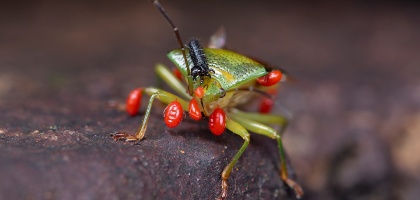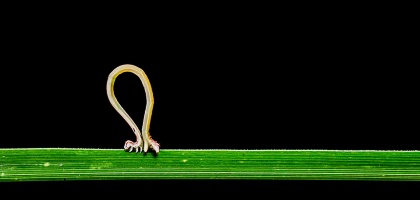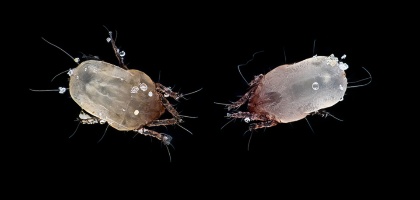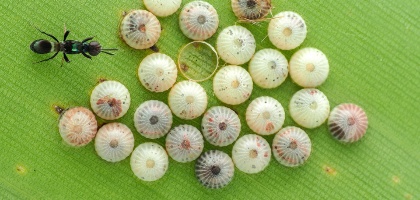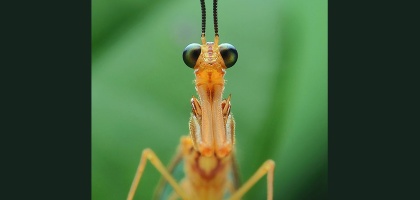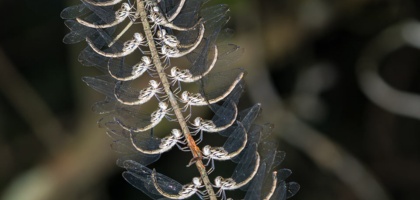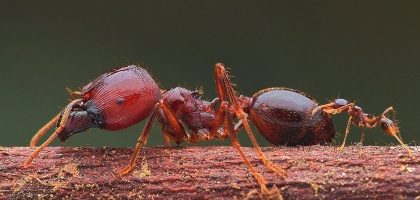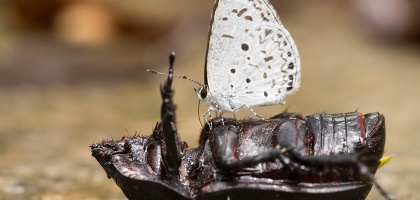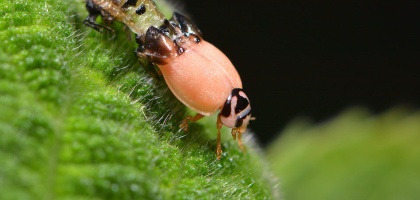魅惑的假眼搜主題
許多小灰蝶科的成員都具有尾突及假眼紋,假眼紋可用來混淆天敵的判斷。尾部的眼紋和尾突,擬似頭部的複眼和觸角,常混淆天敵的攻擊,騙得生存的機會。小灰蝶在訪花時,會不時的擺動尾突,以吸引天敵的注意,讓天敵誤以為是頭部。圖1、圖2的尾突和假眼紋皆遭受過天敵的攻擊而有破損,圖3則是完整無缺的個體。三隻在相同地點的恆春小灰蝶,就有兩隻小灰蝶的假眼紋有破損,可見其假眼紋生存的重要性,藉此逃離捕食者的攻擊。
Many lycaenid butterflies have filamentous “tails” and eye-like markings on the ends of their wings. Such eyespots and tails mimic eyes and antennae, confusing their predators and increasing their chance of survival. While visiting flowers, these butterflies frequently move their hindwing tails to attract predators’ attention and make them believe they are looking at as head. In images 1 and 2, the hindwing tails and eyespots have apparently been attacked by a predator. Image 3 is an intact individual. Three individuals are all Deudorix epijarbas menesicles, photographed in the same location. Two of them show damaged eyespots, indicating the importance of mimicry in surviving predator attacks.
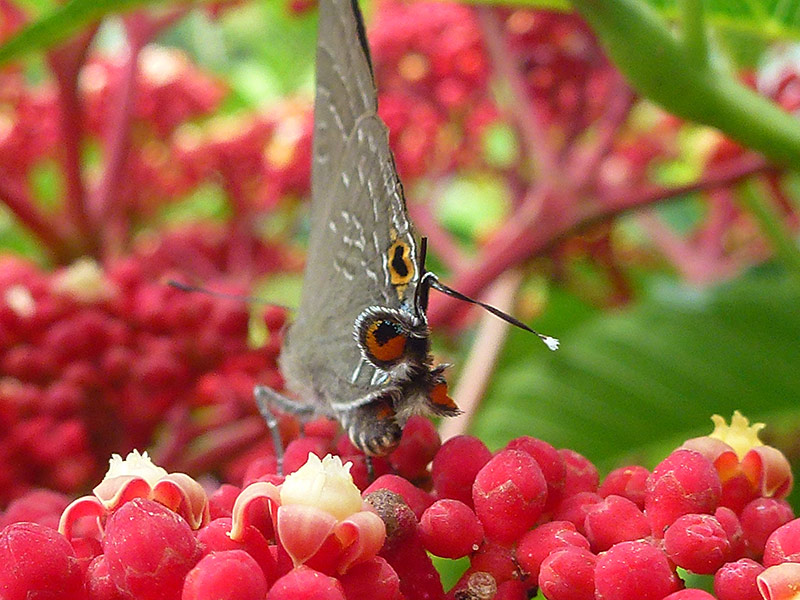
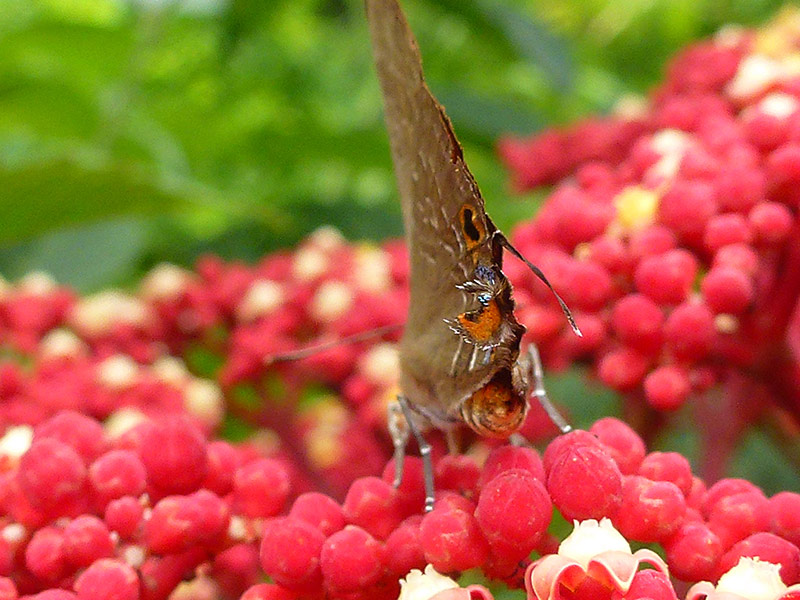
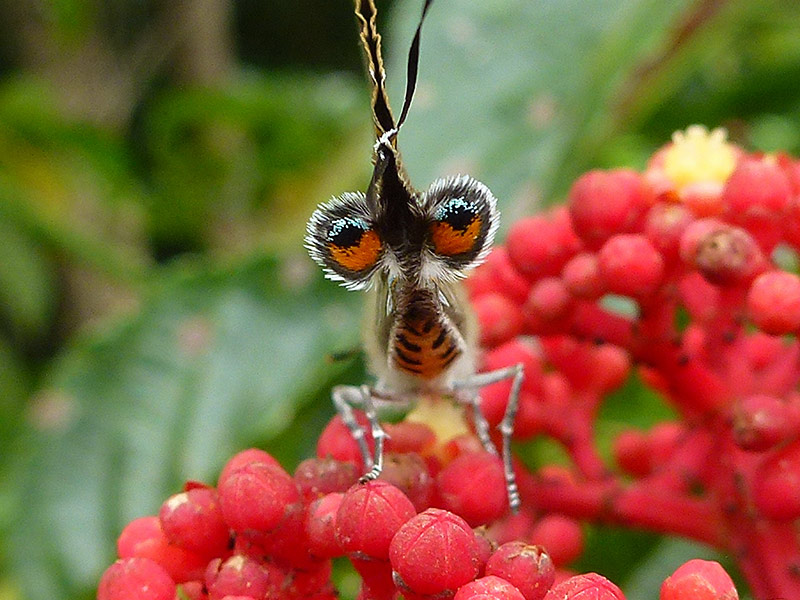
-
主題標籤
